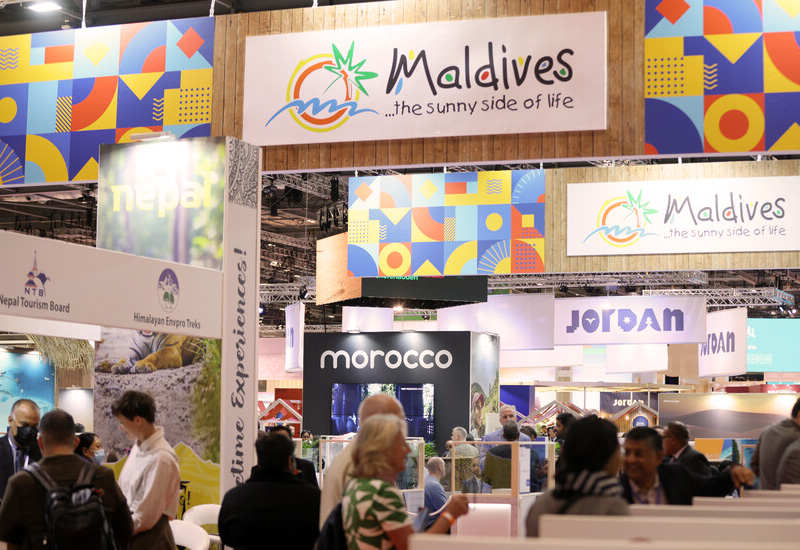The World Travel Market 2023 (WTM) trade event in London took place against a backdrop of new challenges facing the global travel and tourism industry.
As one of the most important tourism conferences out there, the event was closely followed by the media. Here’s what stood out, according to our analysis of 1,108 English-language articles published in the past month:
1. Responsible tourism was the most important topic
Responsible tourism emerged as a dominant topic, reflecting the travel industry’s growing recognition of its role in sustainability and community impact.
The event highlighted initiatives from countries like South Africa and India, showcasing how they are integrating responsible tourism policies and partnerships into their tourism models. These examples served to illustrate the broader message of the conference: as the tourism industry evolves, it must embrace sustainability and responsible practices to ensure its long-term viability and minimise environmental and social impacts.
A number of reports noted how Germany is encouraging tourists to stay longer to relatively reduce their carbon footprint while the tourist boards of Greece, Italy, Spain and France outlined how they are enticing more holidaymakers to visit during the shoulder and winter seasons, as well as more off-the-beaten-track places to ease pressure on hotspots. This discussion underscored the urgency for tourism destinations to adopt sustainable practices and adapt to environmental challenges to safeguard their tourism sectors.
Many journalists highlighted the fact that despite the geopolitical uncertainty and the cost-of-living crisis, the travel industry remains robust, with consumers showing a willingness to spend more on holidays. This resilience was reflected in the latest WTM report, which indicated a growing trend towards ‘affordable luxury’ in travel.
In this context, Juliette Losardo, the exhibition director at WTM London, emerged as the most influential spokesperson in the conversation:
Losardo was widely cited as saying that people are opting for higher quality accommodations and premium travel options, seeking value and comfort over cost-saving measures.
2. Asian and African destinations dominated the debate
Our analysis found that India, Saudi Arabia, Thailand, and South Africa were the most prominent destinations in the media discourse, each drawing attention for their distinctive destination branding.
Showcasing various tourism products, India‘s ‘Incredible India! Visit India Year 2023’ theme gained media traction by demonstrating the county’s historical and cultural richness, emphasising the integration of tangible and intangible heritage for a holistic travel experience. This approach highlighted the depth and diversity of Indian tourism, catering to a wide range of interests from history to culinary delights.
Meanwhile, Saudi Arabia, with its largest-ever exhibition, focused on traditional crafts, music, and digital tools for trade partners, which underscored the country’s commitment to becoming a major tourism player.
Thailand, on the other hand, introduced its ‘Meaningful Relationship’ concept, focusing on upcycling and responsible tourism initiatives, which reinforced Thailand’s commitment to eco-friendly practices and resonated with global trends towards sustainability in travel.
Similarly, South Africa’s delegation highlighted the country’s diverse offerings and commitment to sustainable and community-based tourism. The emphasis on hidden gems and local communities, along with successful growth in tourist arrivals, demonstrated South Africa‘s appeal as a diverse and culturally rich destination.
3. Tourism companies highlighted post-Covid recovery and AI
Several corporate players in the travel industry, from real estate development to technology, garnered significant media attention.
For instance, real estate developer Red Sea Global (RSG) made headlines with its announcement of the luxury hotel brand Shebara within its new giga-project. Its approach, encompassing design harmony with nature and solar-powered operations, gained media interest as it tapped into the focus on eco-friendly travel options.
In the airline sector, announcements by British Airways and EasyJet about expanded flight schedules to Cyprus illustrated the industry’s recovery and growth, a topic of high relevance in post-pandemic travel discussions. This news, signalling increased air connectivity and potential tourism growth, aligned with the broader narrative of the travel industry’s resilience and adaptation to changing market conditions.
Meanwhile, Trip.com Group‘s first-ever presence at WTM 2023, particularly its focus on AI-driven tools and strategic growth in the European market, attracted media attention by highlighting the role of technology in reshaping travel experiences. The travel agency’s emphasis on personalised travel experiences and community engagement through AI applications reflected the increasing importance of technology in enhancing customer service and engagement in the travel sector.
Why media analytics is vital for event PR
Major industry events like WTM tend to generate a significant amount of media coverage. In this context, media analytics solutions are essential for PR and communications for at least three reasons:
- Evaluating Performance: Shows like WTM are prime opportunities for tourist boards to promote their countries and for travel companies to unveil new projects and solutions. Media analytics could provide granular insights into how these initiatives perform in the media landscape, including how destination brands are framed, how they compare to competitors, and how the reach and penetration of strategic messages vary across different markets and media formats. Stakeholder mapping can also show where and how spokespeople were quoted, allowing for a comprehensive evaluation of your thought leadership strategy.
- Preparing for Upcoming Events: Thematic and message analysis offers crucial insights into the kinds of campaigns and messages that garner the most engagement. This enables PR and communications professionals to tailor future initiatives towards strategies that connect with their intended audience, optimising media ROI in the process. Moreover, by studying the successful approaches of competitors, teams can gain guidance on how to craft effective tactics for future events.
- Feeling the Industry’s Pulse: Major trade shows offer a snapshot of the current state of the industry, so it’s important to identify emerging trends and topics that are gaining traction. This information is crucial for understanding if there’s a media “white space” — untapped topics or narratives — that your brand can occupy with its strategic positioning.
